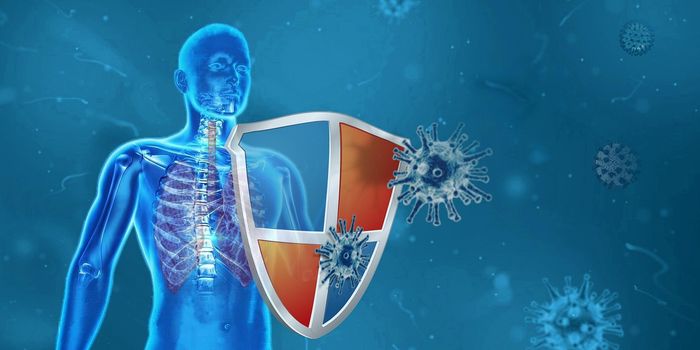Researchers Learn how the Immune System is Alerted to Viruses
Our immune system has to defend against many kinds of foreign invaders, like bacterial pathogens or viruses. But first, those enemies must be identified. New work has revealed how viruses trigger our innate immunity to launch an attack. Reporting in the journal Immunity, an international team of researchers found that a protein called SIDT2 helps cells recognize viral particles in their environment, and can aid in the stimulation of an immune response. This work could help scientists create better therapeutics for viral infections, which can be very difficult to treat.
Viruses act to release genetic material in the form of RNA to the area around cells that are infected with a virus. A leader of the research, Dr. Tan Nguyen, explained that SIDT2 enables that viral RNA to migrate between compartments inside of cells, thus enabling it to reach proteins that initiate anti-virus immunity. He outlined the work in the video.
"This RNA is in a double-stranded form, called dsRNA, that is not normally found in our body. Human cells have evolved ways to detect dsRNA as a warning sign of an active viral infection and, in this way, dsRNA acts as an important trigger for cells to mount an anti-viral immune response,” explained Dr. Nguyen.
"Cells constantly survey their environment by 'swallowing' small samples of their environment into compartments called endosomes. The enigma was that no one knew how the dsRNA escaped the endosome to reach the cytoplasm, where it can be detected by the cell,” Dr. Nguyen continued.
The crucial component needed to move dsRNA out of these endosomes is SIDT2. After that, the immune response begins.
Viruses have many ways to stop an infected cell from triggering the immune system, said co-author Dr. Ken Pang. "Intriguingly, we showed that SIDT2 is critical for uninfected 'bystander' cells to detect viral RNA in their environment. This means bystanders can trigger protective immunity before they even encounter the virus itself," Dr. Pang noted.
"Viruses have evolved many ways to switch off the immune response, allowing them to spread, while humans have evolved countermeasures to allow a rapid and protective immune response that contains the viral infection. SIDT2 is helping humans in the 'arms race' between viruses and their human hosts."
The work could help create a new class of therapeutics that are inspired by dsRNA. "For more than a decade there have been attempts to use modified dsRNA to switch off genes that cause disease - an approach called RNA interference. While there have been many clinical trials utilizing RNA interference, delivering RNA into cells has been a huge challenge, and the lack of effective delivery has meant that these trials have all ultimately failed," Dr. Pang explained.
"Now that we know SIDT2 is important in trafficking double-stranded RNA into cells, future RNA-based therapeutics can hopefully be designed to maximize their transport by SIDT2," Dr. Pang concluded.
Sources: AAAS/Eurekalert! Via Walter Eliza Hall Institute for Medical Research, Immunity









